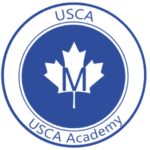[et_pb_section fb_built=”1″ fullwidth=”on” admin_label=”Header Section” _builder_version=”4.20.2″ background_color=”#823505″ background_enable_image=”off” parallax=”on” top_divider_color=”rgba(255,255,255,0.3)” top_divider_height=”45%” bottom_divider_height=”30px” global_colors_info=”{}”][et_pb_fullwidth_header text_orientation=”center” button_one_text=”CONTACT US” button_one_url=”https://www.uscaacademy.com/contact-information/” _builder_version=”4.20.2″ title_font=”Varela Round|700||on|||||” title_text_color=”#ffffff” title_font_size=”45px” title_line_height=”1.4em” content_font=”Rubik||||||||” content_font_size=”18px” content_line_height=”2em” subhead_font=”Varela Round|700|||||||” subhead_text_color=”#ffffff” subhead_font_size=”50px” subhead_line_height=”1.4em” background_color=”rgba(255,255,255,0)” background_size=”initial” background_position=”top_left” background_repeat=”repeat” custom_button_one=”on” button_one_text_size=”16px” button_one_text_color=”#2f4d9e” button_one_bg_color=”#ffffff” button_one_border_width=”15px” button_one_border_color=”rgba(210,159,104,0)” button_one_border_radius=”100px” button_one_font=”Rubik|700|||||||” button_one_use_icon=”off” custom_button_two=”on” button_two_text_size=”16px” button_two_text_color=”#ffffff” button_two_bg_color=”rgba(0,0,0,0.6)” button_two_border_width=”15px” button_two_border_color=”rgba(210,159,104,0)” button_two_border_radius=”100px” button_two_font=”Rubik|700|||||||” button_two_use_icon=”off” background_layout=”light” custom_margin=”|||” custom_padding=”8vw||4vw|” animation_style=”slide” animation_direction=”bottom” animation_intensity_slide=”1%” subhead_font_size_tablet=”” subhead_font_size_phone=”30px” subhead_font_size_last_edited=”on|phone” button_one_text_color_hover=”#ffffff” button_one_border_radius_hover=”100px” button_two_border_radius_hover=”100px” button_one_bg_color_hover=”rgba(0,0,0,0.72)” button_two_bg_color_hover=”#ff8a70″ global_colors_info=”{}” button_one_text_size__hover_enabled=”off” button_two_text_size__hover_enabled=”off” button_one_text_color__hover_enabled=”on” button_one_text_color__hover=”#ffffff” button_two_text_color__hover_enabled=”off” button_one_border_width__hover_enabled=”off” button_two_border_width__hover_enabled=”off” button_one_border_color__hover_enabled=”off” button_two_border_color__hover_enabled=”off” button_one_border_radius__hover_enabled=”on” button_one_border_radius__hover=”100px” button_two_border_radius__hover_enabled=”on” button_two_border_radius__hover=”100px” button_one_letter_spacing__hover_enabled=”off” button_two_letter_spacing__hover_enabled=”off” button_one_bg_color__hover_enabled=”on” button_one_bg_color__hover=”rgba(0,0,0,0.72)” button_two_bg_color__hover_enabled=”on” button_two_bg_color__hover=”#ff8a70″]
[/et_pb_fullwidth_header][/et_pb_section][et_pb_section fb_built=”1″ background_color_gradient_end_1=”#c7cbd4″ admin_label=”Feature” _builder_version=”4.16″ background_color=”#7f5aff” custom_padding=”0|0px|0|0px|false|false” global_colors_info=”{}”][et_pb_row use_custom_gutter=”on” gutter_width=”1″ make_equal=”on” padding_top_bottom_link_1=”true” padding_top_bottom_link_2=”true” module_class=” et_pb_row_fullwidth” _builder_version=”4.16″ width=”100%” width_tablet=”” width_phone=”” width_last_edited=”on|desktop” max_width=”100%” max_width_tablet=”” max_width_phone=”” max_width_last_edited=”on|desktop” custom_padding=”0px|0px|0px|0px” z_index_tablet=”500″ box_shadow_horizontal_tablet=”0px” box_shadow_vertical_tablet=”0px” box_shadow_blur_tablet=”40px” box_shadow_spread_tablet=”0px” make_fullwidth=”on” global_colors_info=”{}”][et_pb_column type=”4_4″ _builder_version=”4.16″ background_color=”#ffffff” custom_padding=”120px|80px|120px|10%” custom_padding_tablet=”|10%||10%||true” custom_padding_phone=”” custom_padding_last_edited=”on|tablet” global_colors_info=”{}” custom_padding__hover=”|||”][et_pb_code _builder_version=”4.20.2″ custom_padding=”3px|||||” global_colors_info=”{}”]
| Course Title : | Studies in Literature, Grade 12 (ETS4U) |
| Course Name : | Studies in Literature |
| Course Code : | ETS4U |
| Grade : | 12 |
| Course Type : | Mixed – University Preparation |
| Credit Value : | 1.0 |
| Prerequisite : | ENG3U, English Grade 11, University Preparation |
| Curriculum Policy Document: | English, The Ontario Curriculum,Grades 11 and 12, 2007 (Revised) |
| Course Developer: | USCA Academy |
| Course Reviser: | Ladees Al Hafi |
| Department: | English |
| Development Date: | July 2022 |
| Most Recent Revision Date: | July 2022 |
[/et_pb_code][et_pb_text _builder_version=”4.20.2″ hover_enabled=”0″ global_colors_info=”{}” sticky_enabled=”0″]
Course Description
This course is for students with a special interest in literature and literary criticism. The course may focus on themes, genres, time periods, or countries. Students will analyse a range of forms and stylistic elements of literary texts and respond personally, critically, and creatively to them. They will also assess critical interpretations, write analytical essays, and complete an independent study project.
Overall Curriculum Expectations
1. Understanding Texts: read and demonstrate an understanding of a variety of literary texts from different countries, cultures, and historical periods
2. Analysing Texts: respond to and analyse literary texts to develop and extend their understanding of how content, form, and style in combination communicate meaning and enhance a text’s effectiveness;
3. Critical Literacy: demonstrate an understanding that the perspective of the author, the reader, and the text all influence the reading experience;
4. Literary Criticism: use literary criticism to enhance their understanding of literature;
5. The Role of Literature in Society: assess the importance of literature as a social and cultural force.
[/et_pb_code][et_pb_code _builder_version=”4.20.2″ custom_margin=”||-1px|||” global_colors_info=”{}”]
Outline of Course Content
|
Unit |
Titles and Descriptions |
Time and Sequence |
|
Unit 1 |
Poetry Students will become familiar with various forms of poetry of many different periods including the Middle Ages, the Renaissance, the 18th Century, the Victorian Era, and Modern and Contemporary periods. |
20 hours |
|
Unit 2 |
Short Stories Students will be invited to read and enjoy several short stories and to decide for themselves which elements seem to dominate in each text. Assignments will include a short story analysis. |
20 hours |
|
Unit 3 |
Novel Study In this instructional unit, students read and analyze novels of their choice while fulfilling some common criteria. They will complete a formative essay after novel analysis. |
15 hours |
|
Unit 4 |
Film and Media In this unit, students will analyze ideologies and archetypes found in film, critique a film through the lens of a literary theory of their choosing and will look at the ways that “old” texts are marketed to new audiences. |
15 hours |
|
Summative Evaluation (15% of Final Mark): Analysis of chosen author’s writing style Creative text modeling chosen author’s styleOral presentation synthesizing various components of this project |
15 hours |
|
|
Summative Final Evaluation (30% of Final Mark): In-class Exam (15% of final mark) includes I.S.U. Independent Study Unit (see above, 15% of final mark) |
20 hours |
|
|
Total |
110 hours |
[/et_pb_code][et_pb_code _builder_version=”4.20.2″ global_colors_info=”{}”]
Since the over-riding aim of this course is to help students use language skilfully, confidently and flexibly, a wide variety of instructional strategies are used to provide learning opportunities to accommodate a variety of learning styles, interests and ability levels. These include:
|
Think/pair/share |
Word wall |
Panel discussions |
|
Directed Questioning |
Group learning |
Role playing |
|
Reading response journal |
Extensive use of visual clues |
Interviews |
|
Guided writing |
Scaffolding |
Simplified texts |
|
Story telling/story boarding/media production |
Oral presentations |
Pre-teaching of key vocabulary |
[/et_pb_code][et_pb_code _builder_version=”4.20.2″ global_colors_info=”{}”]
A variety of strategies are used to allow students opportunities to attain the necessary skills for success in this course and at the post-secondary level of study. To facilitate learning, the teacher uses a variety of activities engaging the whole class, small groups, and individual students.

